
Tasks aligned to 4.NF.4. They can also be used in 5.NF.4.
- Subject:
- Mathematics
- Material Type:
- Activity/Lab
- Formative Assessment
- Author:
- Drew Polly
- Date Added:
- 07/25/2020

Tasks aligned to 4.NF.4. They can also be used in 5.NF.4.

This resource includes tasks aligned to 5.NF.4.
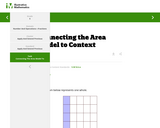
This is a task from the Illustrative Mathematics website that is one part of a complete illustration of the standard to which it is aligned. Each task has at least one solution and some commentary that addresses important aspects of the task and its potential use.
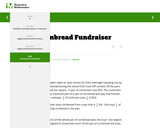
This is a task from the Illustrative Mathematics website that is one part of a complete illustration of the standard to which it is aligned. Each task has at least one solution and some commentary that addresses important aspects of the task and its potential use.
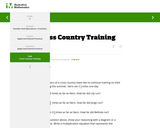
This is a task from the Illustrative Mathematics website that is one part of a complete illustration of the standard to which it is aligned. Each task has at least one solution and some commentary that addresses important aspects of the task and its potential use.

This is a task from the Illustrative Mathematics website that is one part of a complete illustration of the standard to which it is aligned. Each task has at least one solution and some commentary that addresses important aspects of the task and its potential use.

This parent guide supports parents in helping their child at home with the 5th grade Math content. Within the folder you will access Parent Guide PDFs in FIVE Languages: Arabic, English, Hindi, Spanish, and Vietnamese to help on-going communication with caregivers.

This resource accompanies our Rethink 5th Grade Math course. It includes ideas for use, ways to support exceptional children, ways to extend learning, digital resources and tools, tips for supporting English Language Learners and students with visual and hearing impairments. There are also ideas for offline learning.
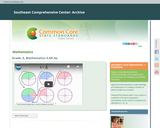
The Common Core State Standards (CCSS) videos are designed to support states, schools, and teachers in the implementation of selected math standards. Each video is an audiovisual resource that focuses on one or more specific standards through examples and illustrations geared to enhancing understanding. The intent of each content-focused video is to clarify the meaning of the individual standard rather than to be a guide on how to teach each standard, although the examples can be adapted for instructional use.
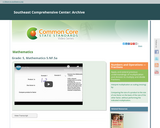
The Common Core State Standards (CCSS) videos are designed to support states, schools, and teachers in the implementation of selected math standards. Each video is an audiovisual resource that focuses on one or more specific standards through examples and illustrations geared to enhancing understanding. The intent of each content-focused video is to clarify the meaning of the individual standard rather than to be a guide on how to teach each standard, although the examples can be adapted for instructional use.
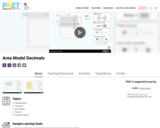
Recognize that area represents the product of two numbers and is additive.
Develop and justify a strategy that uses the area model to simplify a decimal multiplication problem.
Devise a strategy to determine the product of two rational numbers (or an integer and a rational number) by representing the product as an area or the sum of areas.
Use an area model to understand why multiplying a given number by a decimal less than 1 results in a product smaller than the given number.
Interpret the product of two rational numbers using base-ten tiles

Students will use area models to multiply and reduce fractions.

Students will use the design process to create a new pair of shoes. Students will use multiplication to find the area and/or perimeter of their design.
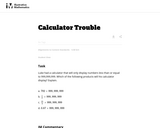
This task requries students to think about division by fractons.
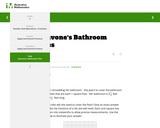
This task helps students build the mental connection between multiplication and area. The situation of tiling will help build this connection since students will be working under the assumptions that the entire floor must be covered without gaps and that tiles can be manipulated in places where a whole tile will not fit. Strategic class discussion will ensure that students develop these connections.
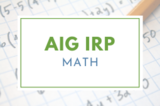
Students construct various buildings using centimeter cubes or inch cubes. Students cause the buildings to collapse in order to determine the appropriate collapse zone firefighters should mark off for any building in danger of collapse during a fire. This lesson was developed by NCDPI as part of the Academically and/or Intellectually Gifted Instructional Resources Project. This lesson plan has been vetted at the state level for standards alignment, AIG focus, and content accuracy.

In this task, students are required to compare the heights of three buildings using multiplication of fractions for the scaling. Since the heights of the other buildings are both given in reference to the Eiffel Tower, students can compare the heights of all three through reason (mathematical practice standards) or computation. Students are required to explain their answers, thus employing even more of the mathematical practice standards.
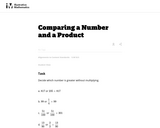
The purpose of this task is for students to compare a number and its product with other numbers that are greater than and less than one.
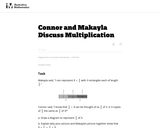
The purpose of this task is to have students think about the meaning of multiplying a number by a fraction, and to use this understanding of fraction multiplication to make sense of the commutative property of multiplication in the case of fractions.

This short video and interactive assessment activity is designed to teach fifth graders about converting decimals into simplified mixed numbers.